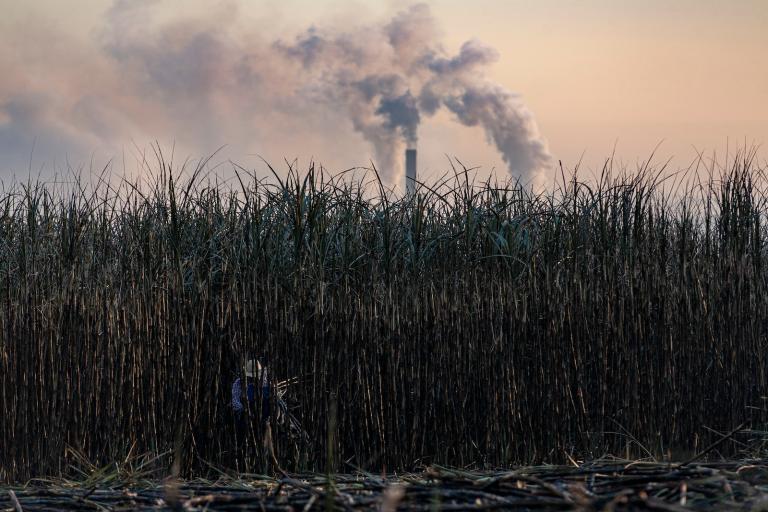I’m becoming more and more convinced every day that addressing climate change and reforming food production are pretty much the same thing. You can’t do one without the other. And — as Yogi Berra might say — vice versa. The food and agriculture industries, aided and abetted by governments worldwide (not to mention by consumers), have succeeded in offloading just about all external costs involved with feeding us. Environmental issues, public health issues, natural resource utilization issues, even most economic issues related to food have all been socialized to the extent that the industry is almost totally isolated from the societal consequences of its actions.
Until now, few have complained, as this system has led to ever lower food prices in the developed world and thriving export markets in the developing world. But the costs, which for 60 years or so seemed to have been pushed back beyond the horizon, are beginning to loom.
Many of us have high hopes that the new administration can make serious progress on reform, but it’s important to focus on how serious the challenge before us actually is. In this way, it’s like the global warming debate back in the ’90s. The science was pretty clear even then. There were visionaries like NASA’s James Hansen and, yes, Al Gore, who understood that we needed to act. But for most Americans, hearing about climate change in the ’90s was like being reminded to carry an umbrella on a sunny day. Where exactly were the portents of doom?
We’re in the same position with food. The portents are a bit more present, perhaps, but doom is not yet upon us. On the one hand, as food-safety lawyer (and apparently one time shortlisted candidate for food safety czar) Bill Marler said, "the wheels on the food safety bus have fallen off." Food prices spike and crash, which in the end hurts both farmers and consumers. The short-lived run up in fuel prices earlier this year scared the bejeezus out of everyone. On the other hand, we’re not experiencing food shortages. Indeed many of us continue to eat too much rather than too little, and we’re positively swimming in protein. And while the rate of growth in agricultural yields is slowing, yields are still growing.
Which is why the following thought experiment from Fred Kirschenmann, austainable ag expert at Iowa State University is so useful (h/t Jill Richardson). Kirschenmann — like supposed Deputy Secretary of Agriculture candidate Chuck Hassebrook — is on Food Democracy Now’s Sustainable Dozen list of progressive food policy folks worthy of consideration for USDA jobs. In an op-ed, Kirschenmann asks the following question of Tom Vilsack:
[L]et’s assume that ten years from now oil will be $300 a barrel, that we only have half the fresh water resources available that we have today for our food and agriculture system and that we have twice the severe weather events. What kind of agriculture should we be designing to put on the landscape that enables farmers to thrive, invites a new generation of farmers to enter farming and that restores the economic health of our rural communities?
Anyone care to take a shot at an answer? I’m all ears.
Kirschenmann manages to encapsulate the coming crisis better than anyone has yet (and whether that moment comes 10 years hence or 20 is, I think, irrelevant). The problem, of course, is that no one really has an answer. While we may have paths to alternative fuels for transportation, we don’t have them for low-carbon solutions for fertilizer and pesticides — not for agriculture on the scale required to feed 7 billion people. And while there are lots of promising sustainable agricultural practices, there is no clear blueprint to get us from here to there on a worldwide basis. This is why we need to start preparing for this near future right now.
The only path toward reform that I see is to force those externalized costs back onto the food system. And the best means we have of reaching that goal is — you guessed it — establishing a market price for carbon along with an end to our ad hoc, pork barrel energy policy. As Kirschenmann points out, "our food and agriculture industry is perhaps more dependent on fossil fuels than any other segment of the economy." So the sooner we start accounting for those costs, the sooner we can start facing the real choices needed for reform.
We can and should get started attacking certain areas of food policy reform — for thoughts on that, see the Ethicurean’s fantastic two-part series on the USDA’s ideal near-term priorities. There’s no excuse for doing nothing. But the fundamental transformation of food and agricultural policy that we need won’t happen without addressing climate change first. I’m willing to be proven wrong, of course. But if I had to bet on which can happen first — reforming the House Agriculture Committee or passing real climate change legislation — I’d bet the farm on climate.

